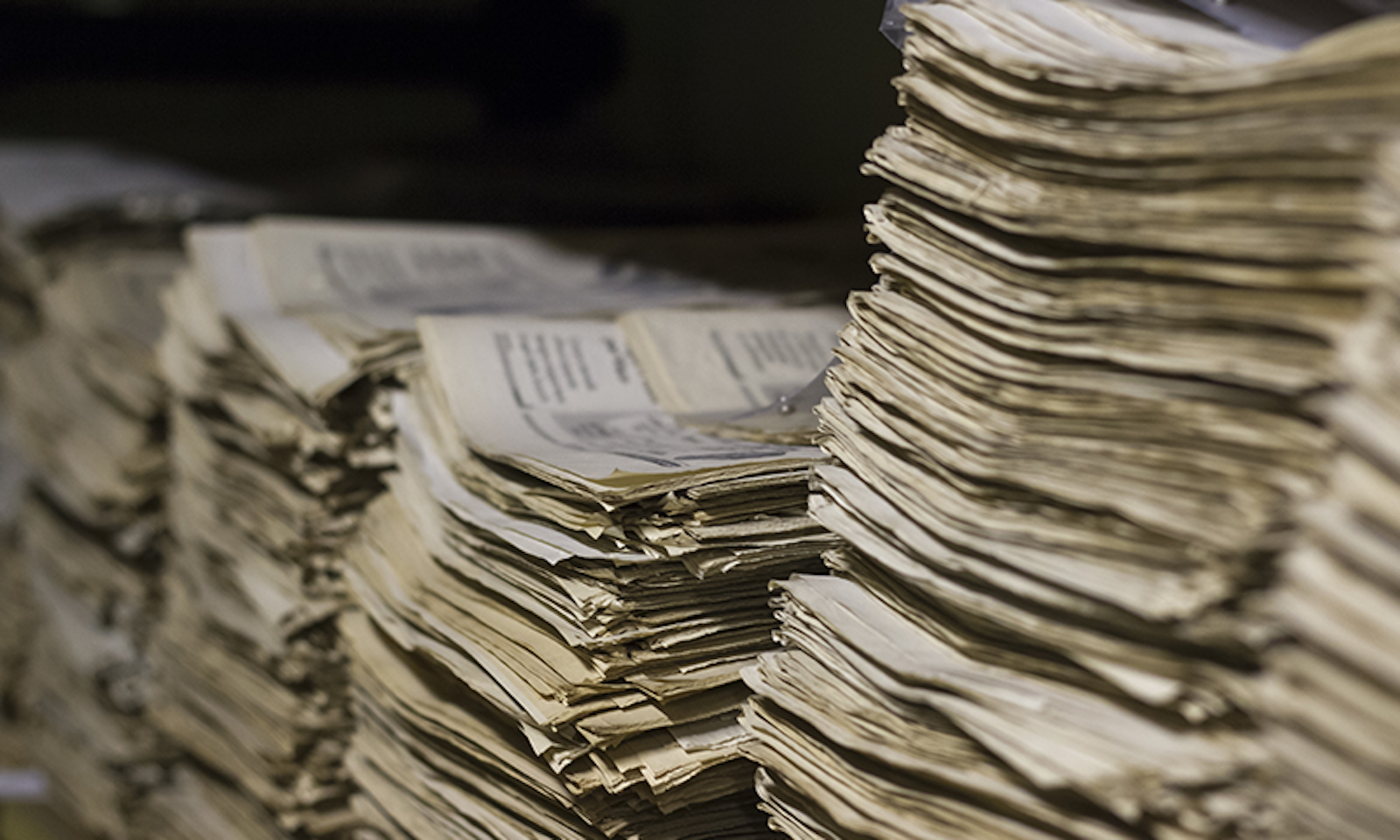By January 1938, Jane Stafford had become the premier medical journalist in the United States, regularly covering advances in cancer research and treatment. While thanking an American Society for Control of Cancer (ASCC) official for sharing positive reactions to her recent newspaper series, she inquired about a press dinner to which she had been invited a few months earlier. The event had already taken place, the publicity director admitted, and at the Harvard Club, where women were not allowed. To have held it elsewhere “would have added a considerable amount to our budget,” and “according to writers and physicians—to have had a woman present would have considerably changed the character of the dinner.”
For mid-20th-century female journalists, especially ones who covered science and medicine, such situations were commonplace. Gender-based bias and restrictions imposed constant challenges in their workspaces, whether at press conferences or academic seminars. Cultural prejudices, social customs, and gratuitous discrimination disrupted the playing field. To their credit and to the benefit of millions of readers, a group of accomplished women at a small Washington, D.C.-based science news organization called Science Service overcame such barriers and, with self-confidence, intelligence, and skill, pioneered in the nascent field of science journalism.

The founders’ vision for the news service had from the outset included attention to the social sciences—a decision with which some trustees and prominent supporters openly disagreed—and the last major addition to the editorial office in the 1920s helped eventually to implement the commitment. Smart and forthright, Marjorie Van de Water found Science Service to be a congenial, welcoming environment. Hired in spring 1929, Van de Water became a skilled feature writer and dependable editor, and remained with the organization until her death in 1962.
To succeed at science reporting, Van de Water and her colleagues had to be able to identify—quickly and accurately—what was or was not “news” in a particular discipline or research area and then draft an account suitable to the assignment. Whatever the format, newspaper editors wanted stories relevant to their readers’ lives, and when the global crisis deepened after the 1929 stock market crash, they increasingly welcomed insights from sociology and economics.
Although some leading scientists, like physicist Robert A. Millikan, persistently condemned those disciplines as quagmires of “controversy and politics,” Science Service forged ahead, with support from Robert P. Scripps, who had inherited controlling interest in the publishing empire and shared his father’s interest in application of the social sciences. At an April 1932 dinner and conference, Robert Scripps was apparently the only speaker who dared address the social importance of public support for science, resolutely dismissing assertions that research would thrive “whether anyone outside the laboratories knows about it or not,” and that scientists should never consider how their work affects humanity. The world faced new perils. Scripps contended that scientists, including social scientists, must “make the millions feel, before they perhaps lose their patience, that all our facts and all our scientific theories can be made to have bearing upon such vital matters as war, poverty, insecurity, unemployment, disease—[and] even political misrepresentation.”
She explored how science might help explain (or treat) humanity’s dark sides.
With encouragement from Scripps and a few sympathetic trustees, Van de Water and her colleagues got to work. Throughout the 1930s, they interpreted the latest social science research, and applied the insights to contemporary political and social issues. Van de Water’s prior work in intelligence testing and contacts among local social scientists proved invaluable, and in her coverage of psychology and psychiatry, she pioneered a new journalistic beat among U.S. news reporters.
Even though Van de Water remained an “erudite” writer, she learned how to assess audience interests as well as choose topics and approaches with wider appeal, such as crime and the criminal mind. From the outset, she explored how science might help explain (or treat) humanity’s dark sides. Her first two bylined articles for Science News-Letter—“The Story of American Crime” (July 27, 1929) and “Why Children Are Murderers” (Aug. 10, 1929)—combined economic and statistical data with interviews of researchers and clinicians studying antisocial behavior. Within a year she was publishing Sunday magazine features like “Trick Questions to Test Your Personality” and “How the Brains of Twins Differ.” She devised clever ways to hook readers, playing on conventional stereotypes and then countering with research-based explanations. One article’s title screamed “Women Scare More Easily Than Men,” but its text, summarizing recent research on anger and emotion, belied the sensationalistic presentation, offering ironic comment on attempts to link gender and weakness.
To gather news and establish connections with sources, Van de Water attended almost every American Psychological Association (APA) meeting from 1931 until her death. It was an exciting time to be interacting with experts in that field. Converting a meeting’s “bombardment of scientific wordage” into a “compact and readable” article, and completing that task on deadline, relied on cooperation from sources. On receiving the APA prize for science writing, Van de Water spoke of the various reactions she had encountered during her career. There were, she admitted, two types who could be “difficult”: “the scientist who is suspicious of the reporter and does not want to have his work reported” because of previous bad experiences or criticism from colleagues, and the “publicity seeker [who] haunts the press room, eager to talk to anyone who will listen.”
Like many on the staff, Van de Water was an avid photographer, winning prizes in local newspaper photography contests and serving for several years as the organization’s photography editor. As photographer and journalist, with concern for accuracy and responsible reporting, and with a keen eye for detail, Van de Water devoted her career to chronicling the rise of the social sciences. ![]()
This article was adapted from Writing For Their Lives: America’s Pioneering Female Journalists, by Marcel Chotkowski LaFollette, published by The MIT Press in August, 2023.
Lead image: Brothers Art / Shutterstock.
































